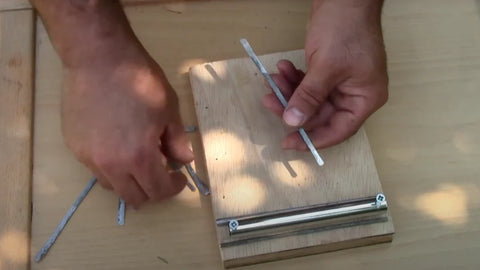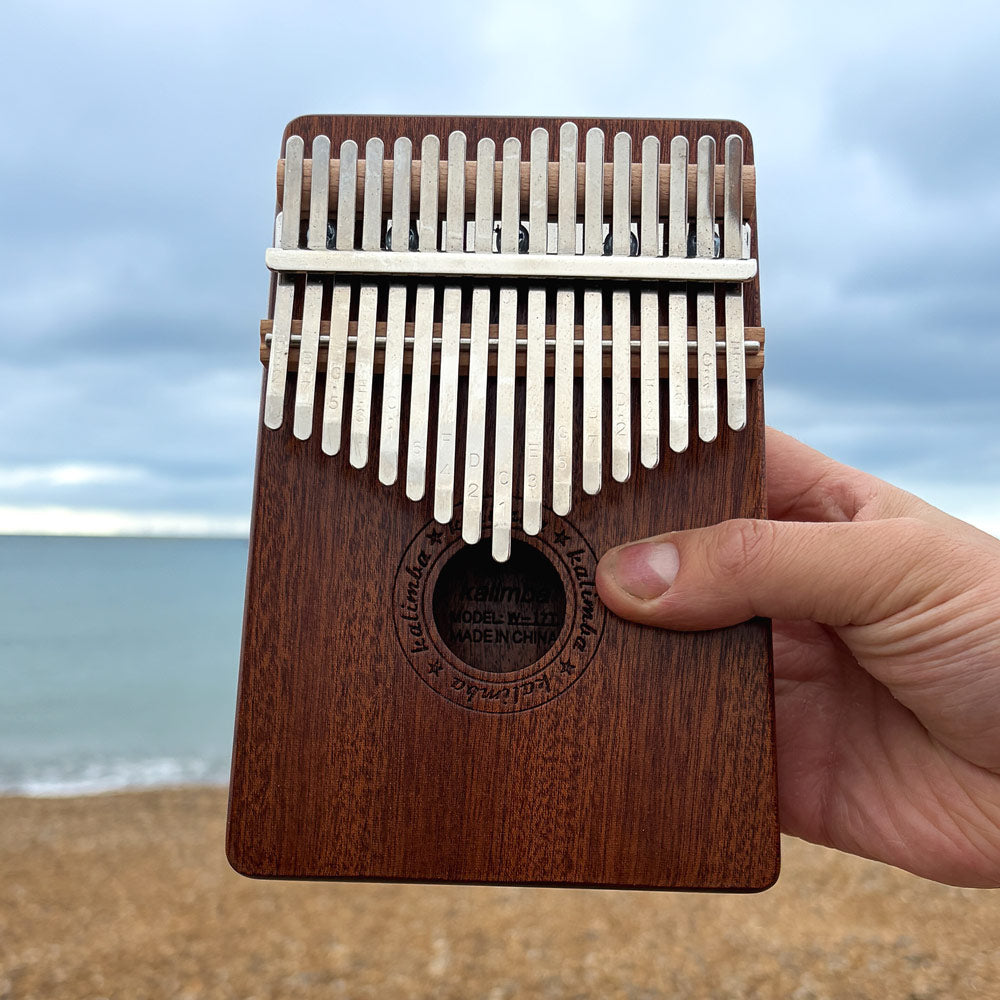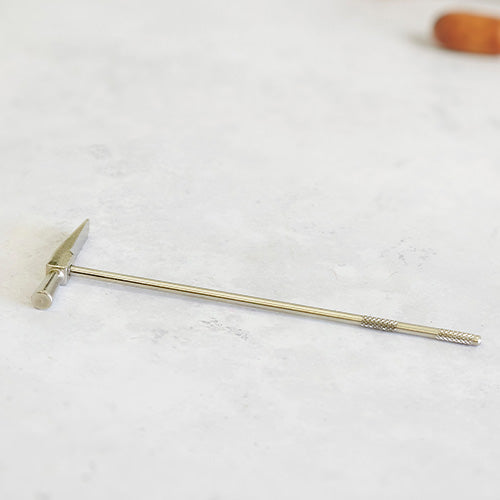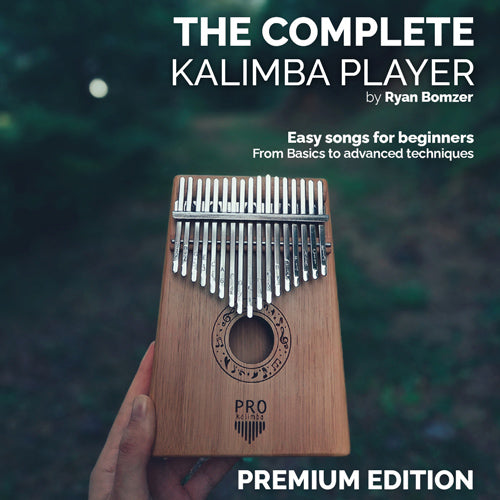What is a kalimba?
Nowadays there are so many different types of music instrument showing up in the market trending, and when I first found my passion for playing the acoustic guitar and keyboard. I didn't even know that kalimbas existed, after all, I never saw these at school in my music class. So skip many years ahead and these are being used all over the world for there unique, beautiful calming sounds. A kalimba also is known as a thumb piano, or mbira is essentially a woodwind musical instrument consisting of a wooden or other material board with attached staggered metal tines.
Do kalimba's have sharps and flats?
What you are referring to is a chromatic kalimba. A chromatic kalimba is tuned to the chromatic scale which uses flats and sharps instead of being tuned to regular C. Although, it is also possible to achieve sharps and flat notes with a specific tuning.
Can you get an electric kalimba?

Yes, you can and they are awesome. If you do get one, it's worth noting that you will also need an amp to connect it up to. This is the electric kalimba that we recommend.
How much do Kalimba's cost?
A kalimba can range from about £7 for a small budget instrument to £169 for a luxury german made kalimba that is made from a drum and has stunning resonance.
Is a Kalimba easy to learn?
it’s considered an easy instrument to learn to play and you can learn very quickly. Although to play the instrument to its full potential just like any other music instrument, to play it professionally you will need to practice for years. It's often thought that you can't play a kalimba unless you have long nails and this is a myth.
How do you record a Kalimba?

Place a studio microphone near your kalimba, plug in headphones, and listen to the audio whilst you play. Adjust the positioning of the microphone or the instrument until you are happy with the sound. For recording your kalimba we recommend a budget studio microphone such as the Rode NT1A as it is affordable but will also give you a clean sound.
This will however need to be hooked up to an audio interface that has phantom power for you to be able to record it but the quality will be top-notch. If you want to go cheaper you could settle for a USB mic but the quality will be inferior.
Where can I find Kalimba tabs?
We have a ton of free kalimba sheet tabs on our website, and we are always adding new ones so check them out now.
What is the easiest song to play on kalimba?
This is of course debatable but I would say that the easiest song to play on the kalimba is twinkle twinkle little star. The song uses only a few notes and can be broken up into only two parts, with the first parts being notes C, C, G, G, A, A, G and the second part being F, F, E, E, D, D, C.
Can you play any song on the Kalimba?
As long as you have enough keys, you absolutely can. If you can learn it, you can play it. There is a special technique that I use to be able to learn any song on the kalimba, and it is highlighted right here in this video.
What are the best Kalimba music books?
- The Complete Kalimba Player eBook
- Kalimba Songbook: 50 Easy Classic Songs
- The Big Kalimba Songbook: 100+ songs
- Kalimba Songbook: Christmas Songs
- Kalimba Songbook: Hymns & Songs of worship
- Kalimba goes Classical: Melodies of the Great Masters
Do you need a tuning hammer?
Whilst it could be beneficial, you don't need it. This is dependant on the person. For example, I have tried using a tuning hammer and I found that it was difficult to use, especially considering that some keys are not easy to get to with the hammer.
Instead, I use my fingers to push the metal notes back and forth to adjust the pitch when my instrument goes out of tune. That being said, it is not uncommon for other people to struggle to tune their kalimba with their fingers as it can make them a little sore. I would say that if you are a DIY'er and want to save a few quid then go for it. If not, then get yourself a tuning hammer.
What kalimba is suited to me?
If you have no prior experience, we would recommend a kalimba that does not have too many tines as it can help you get used to the instrument without you feeling overwhelmed.
If you do have some experience then you will want to go for one that has a full scale of keys that comes with a tuning hammer so that you can custom tune your instrument. If you would like more information before purchasing one check out our buying guide on the most popular thumb piano kalimba.
What are kalimba stickers for?
There are many different types of kalimba stickers but usually they all have the same goal. They are mainly used to help familiarise you with the instrument so that you find it easier to navigate the keys ensuring that you pluck the right notes. As a beginner kalimba stickers are a similar concept to writing the note names on piano keys. Whilst you can buy the stickers, they are not needed.
How to play the kalimba?
A kalimba is played by holding the instrument in the hands and plucking the tines with the thumbs. As long as you have the right notes, you can play any song on it that you would like. Although it will take some practice, just as any instrument takes time to master. They have been known to relieve stress, due to the tones being so soothing.
How to tune a kalimba?
Before you can play the kalimba and even practise it, you should ensure that it is tune. If you have one of our coconut thumb pianos, then you will be able to follow our guide in tuning your own instrument.
Thumb piano vs kalimba vs mbira
The kalimba and mbira look very similar and are played in exactly the same way. They are both constructed using a wooden soundboard with steel keys that are played using your thumbs to create a bell-like sound and therefore are both known as ‘thumb pianos’.
However, although they have the same foundation, there are key differences between the instruments. Firstly, the kalimba is actually much smaller than the mbira. It was inspired by Hugh Tracey in the 1960s, who fell in love with the music culture within Zimbabwe. It puts a Western touch on the traditional sounding mbira, which was a key reason for its integration within the Western market. Another difference between the two, is that the mbira has a double row of keys, whereas the kalimba has a single row of keys.

However, the biggest impact between the two instruments is in their scales. The kalimba makes use of a seven-note diatonic scale which is commonly used throughout all Western music, whereas the mbira also uses these same notes, but in a completely different order.
In some cases, some of these notes may also be missing. This difference allows the kalimba two-note combination to create a diatonic interval which works better when creating Western sounding harmonies. This allows for greater collaboration and a more suitable sound.
In addition to this, the kalimba makes use of a different percussive element. The traditional mbira uses a buzzer, whereas the kalimba makes use of two distinct holes which can be found at the bottom of the sound board.

The musician playing the instrument can use these two holes to create a “wa-wa” sound. Despite their differences, both instruments create the very distinct buzzing effect which distinguishes these thumb pianos from any other instrument in Western music.
What is the history of the kalimba?
The Kalimba was originally known as the mbira. It originated in Africa and was commonly used as a solo instrument, however it soon became known for its use amongst singers, musicians and within dance routines. Although it was used in Africa for centuries, it only became known to the Western world in the 1920s.
It was discovered by a man named Hugh Tracey in Rhodesia (modern day Zimbabwe), who worked with his brother on a tobacco farm within the region. Working on the farm by day, he soon became fascinated by local music and how important it was amongst the local culture.
His interest in this culture led Hugh to meet many popular composers at the time such as Ralph Vaughan Williams and Gustav Holst, who soon persuaded him to begin studying African music in depth. Through his studies, Hugh eventually created the International Library of African Music which focused a great deal on the mbira.
In the early 1960s, Hugh made the decision to alter the mbira to create what is now known as the Kalimba, translated as ‘little music’. He registered the Kalimba as his own trademark and the instrument quickly became popular throughout the Western world.

It adapted very well to many Western music types throughout the 1960s and was very easy for the performer to play whilst singing or as part of a band. The name kalimba was also adopted throughout much of Africa, however, the traditional name mbira is still used throughout Zimbabwe.
The name has also been adapted in several different regions and is known as the ikembe in Rwanda, likembe in the Congo, thumb piano in Western Regions and less commonly the sansa, sanza marimbula and marimba. Although the names are different, the instrument remains fundamentally the same and is very popular within many regions throughout Africa.
How to make a kalimba?

Though it may appear simple at first glance, making a kalimba is no easy task. It takes a very skilled craftsman to perfect this process, as well as the right materials, sizes and angles to create the ideal sound. Here is how a kalimba is made.
It all begins with what is known as the soundbox, which is created using kiaat wood (an African hardwood). This is made into a square-like shape and can also be created with other materials such as bamboo, spruce, sandalwood, coconut and mahogany.
Once the correct shape has been made, the soundbox is fixed with metal keys or tongues (known as lamellas) at the top. These keys can be made from cane or steel, as well as home alternatives if you want to switch things up a little. These alternatives include old spoon handles, bicycle spokes or even spring wire cut down into the correct shape.
These keys are mounted across two bars at one end and attached to the soundbox using a wooden dowel to hold them in place. The dowel is key for tuning each key. One of the sound holes is used as a bridge, whilst the other holds the tongues in place.
The dowel is arguably the most important aspect of any kalimba as it determines the pitch of the tongues. The shorter the tongue, the higher the pitch and the longer the tongue the lower the pitch. If this process sounds a little too complex, there’s no need to panic. There are many homemade kalimba kits available online that will provide you with pre-cut parts for you to put together.
This is the ideal option for someone looking to get started, as you can put your kalimba together without having to carve out the parts yourself. With step-by-step instructions, you’ll be able to build, paint, tune and play your new kalimba in no time at all!





